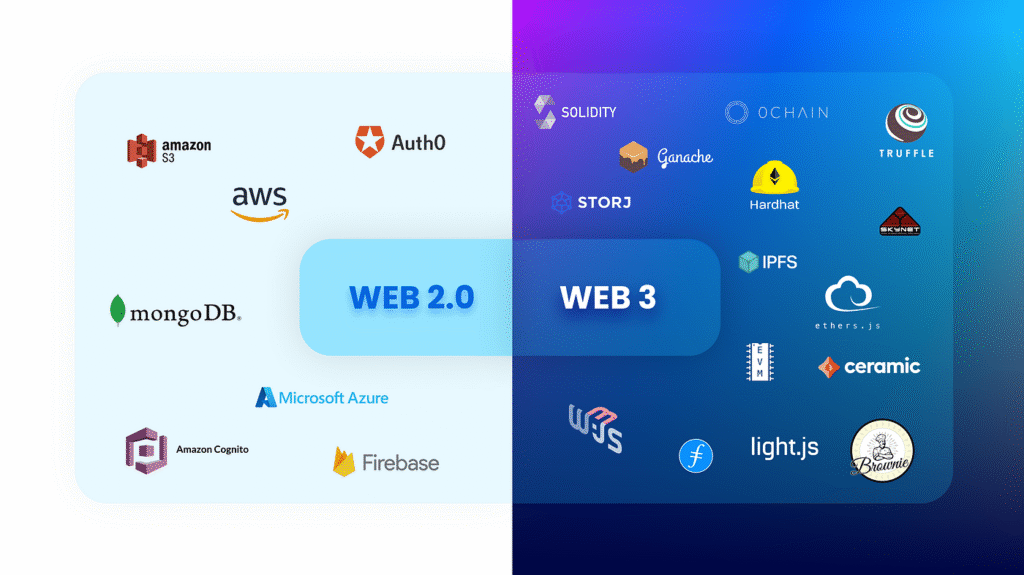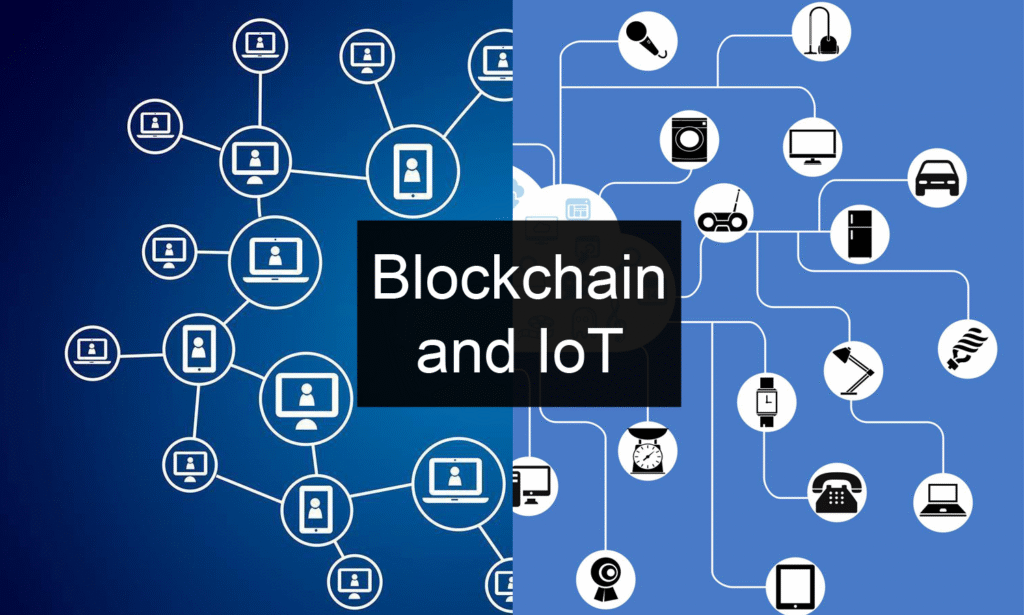The internet is undergoing a major shift, transitioning from Web2—a centralized, service-based ecosystem controlled by a few large corporations—to Web3, a decentralized internet where users own their data and assets. This new iteration of the web is made possible by blockchain technology.
Blockchain provides the infrastructure and trustless environment required for Web3 to flourish. From enabling decentralized finance (DeFi) and NFTs to DAOs and Metaverse experiences, blockchain networks serve as the backbone for this transformation. In this article, we explore the top blockchain network platforms powering Web3, analyze their features, and assess their role in building the future digital landscape.
Key Takeaways
- Web3 aims to decentralize the internet, giving users more control.
- Blockchain is the foundational layer enabling smart contracts and dApps.
- Ethereum, Polkadot, Solana, Avalanche, and others are the key players driving innovation.
- Interoperability, scalability, and energy efficiency are critical features.
- Future trends like zkRollups and decentralized identity will further expand Web3 use cases.
Understanding Web3 and Blockchain
What is Web3?

Web3 is the third era of the internet that emphasizes decentralization, privacy, security, and ownership. It is built on blockchain technology, allowing users to interact without intermediaries and enabling value exchange across digital platforms.
Key aspects of Web3 include:
- Decentralization: No single point of control.
- Permissionless access: Anyone can participate.
- Token-based economy: Cryptographic tokens incentivize participation.
- User ownership: Users own their identity and data.
How Blockchain Powers Web3
Blockchain is a distributed ledger that stores data across a network of computers. It ensures transparency, immutability, and security, which are essential for trustless systems.
In Web3, blockchain enables:
- Smart Contracts: Self-executing contracts for automation.
- dApps (Decentralized Applications): Apps that run on peer-to-peer networks.
- DAOs (Decentralized Autonomous Organizations): Governance without centralized control.
- Digital Assets: Cryptocurrencies, NFTs, and tokens.
Key Features of Web3 Blockchain Platforms

Before diving into the top platforms, it’s important to understand the attributes that make a blockchain network suitable for Web3:
- Scalability: The ability to handle high volumes of transactions.
- Interoperability: Seamless communication between different blockchains.
- Security: Strong consensus mechanisms to resist attacks.
- Sustainability: Energy efficiency and eco-friendly consensus algorithms.
- Developer Ecosystem: Tools, documentation, and support for dApp development.
- Governance: Community-driven upgrades and decisions.
Top Blockchain Network Platforms
Ethereum: The Pioneer of Smart Contracts
Overview
Ethereum introduced the concept of programmable smart contracts. It remains the dominant platform for DeFi, NFTs, and DAOs.
Key Strengths
- Massive developer ecosystem
- Transition to Proof-of-Stake (Ethereum 2.0)
- Home to most DeFi and NFT projects
Challenges
- Gas fees
- Network congestion
Web3 Contributions
- DeFi (Uniswap, Aave)
- NFTs (OpenSea, SuperRare)
- DAOs (Aragon, DAOstack)
Polkadot: Interoperability Leader
Overview
Founded by Ethereum co-founder Dr. Gavin Wood, Polkadot focuses on enabling multiple blockchains to communicate via its relay chain and parachains.
Key Strengths
- Cross-chain interoperability
- Custom parachains
- Shared security model
Challenges
- Complex structure for new developers
Web3 Contributions
- Parachains like Acala (DeFi)
- Moonbeam (Ethereum compatibility)
Solana: Speed and Low Cost

Overview
Solana combines Proof-of-Stake with Proof-of-History to deliver ultra-fast transaction speeds at low costs.
Key Strengths
- 65,000+ TPS
- Low gas fees
- Growing NFT and DeFi ecosystems
Challenges
- Network reliability issues
Web3 Contributions
- DeFi: Serum, Raydium
- NFTs: Magic Eden
Avalanche: Customizable Blockchain Ecosystem
Overview
Avalanche is a platform for launching highly scalable and interoperable blockchain networks, supporting multiple custom blockchains.
Key Strengths
- Subnets for custom chains
- High throughput
- Near-instant finality
Challenges
- Less decentralized compared to Ethereum
Web3 Contributions
- DeFi: Trader Joe
- Gaming dApps
Cardano: Peer-Reviewed Blockchain
Overview
Cardano emphasizes formal methods and peer-reviewed research in its development. It uses the Ouroboros PoS consensus algorithm.
Key Strengths
- Scientific approach
- Energy-efficient PoS
- Gradual upgrade path
Challenges
- Slower pace of development
Web3 Contributions
- Identity (Atala PRISM)
- DeFi protocols (Minswap)
Cosmos: The Internet of Blockchains

Overview
Cosmos is a modular framework for building interconnected blockchains using the Cosmos SDK and IBC (Inter-Blockchain Communication).
Key Strengths
- IBC protocol for interoperability
- Easy custom blockchain deployment
- Developer-friendly
Challenges
- Fragmentation risk
Web3 Contributions
- dYdX (moving from Ethereum to Cosmos)
- Terra (before collapse)
NEAR Protocol: Developer-Focused and Scalable
Overview
NEAR combines sharding with a developer-first approach, including readable addresses and simplified onboarding.
Key Strengths
- Sharded architecture
- Developer-friendly
- High throughput
Challenges
- Still building developer community
Web3 Contributions
- Gaming platforms
- DeFi and social apps
Fantom: Fast Finality for Real-Time Apps
Overview
Fantom uses an aBFT consensus mechanism called Lachesis for instant finality and near-zero fees.
Key Strengths
- Fast confirmation times
- Low-cost transactions
- Robust DeFi ecosystem
Challenges
- Less adoption than Ethereum/Solana
Web3 Contributions
- SpookySwap, Geist Finance
Tezos: Self-Amending and Governance-Driven

Overview
Tezos is a self-upgradable blockchain that allows seamless upgrades via on-chain governance.
Key Strengths
- On-chain governance
- Formal verification for contracts
- Energy-efficient
Challenges
- Lower network activity
Web3 Contributions
- NFT marketplaces
- Central bank pilots (France)
The Open Network (TON): Telegram’s Blockchain Vision
Overview
Revived from Telegram’s abandoned crypto project, TON is now community-led and aims to integrate blockchain into messaging and payments.
Key Strengths
- Telegram integration
- High scalability
- Fast block times
Challenges
- Still early stage
Web3 Contributions
- Messaging wallets
- P2P payments
Comparative Analysis
| Feature | Ethereum | Polkadot | Solana | Avalanche | Cosmos | Cardano | NEAR | Tezos | TON |
|---|---|---|---|---|---|---|---|---|---|
| Consensus | PoS | NPoS | PoH+PoS | Avalanche | Tendermint | Ouroboros | Nightshade PoS | LPOS | BFT |
| TPS | ~30-100 | Varies | 65,000+ | 4,500 | ~10,000 | ~250 | 100,000+ | ~100 | >10,000 |
| Finality | ~6 mins | Fast | ~2 secs | 2 secs | 5-10 secs | ~1 min | 1 sec | ~1 min | 1 sec |
| Ecosystem | Mature | Expanding | Growing | Expanding | Expanding | Growing | Growing | Moderate | New |
| Interoperability | Moderate | High | Low | Moderate | High | Moderate | Moderate | Low | Low |
| NFT Friendly | Yes | Limited | Yes | Yes | Limited | Yes | Yes | Yes | Yes |
Use Cases in Web3
- Finance (DeFi): Lending, trading, yield farming.
- Digital Identity: Self-sovereign ID systems.
- Gaming and Metaverse: In-game economies, virtual assets.
- Supply Chain: Transparency and tracking.
- Social Networks: Decentralized platforms like Lens and Farcaster.
Challenges
- Scalability
- Regulatory uncertainty
- User experience (wallets, onboarding)
- Security (bridge hacks, rug pulls)
Emerging Trends
- Layer 2 scaling
- Zero-knowledge proofs (zkRollups)
- Cross-chain bridges
- Account abstraction
- Decentralized identity (DID)
Also Read : What Is Blockchain And How Does It Actually Work?
Conclusion
Blockchain technology is not just a fleeting trend; it is the fundamental architecture upon which the next phase of the internet is being built. Web3’s promise of decentralization, transparency, and user empowerment is becoming a reality thanks to the robust capabilities of platforms like Ethereum, Polkadot, Solana, and others.
Each blockchain network brings a unique value proposition—from Ethereum’s DeFi dominance to Cosmos’s interoperability and Solana’s speed. Together, they form a diverse and thriving ecosystem that is reshaping industries and redefining digital experiences.
FAQs
What is the most widely used blockchain for Web3?
Ethereum remains the most widely adopted due to its large developer community and established infrastructure.
Which blockchain is fastest?
Solana currently offers some of the fastest transaction speeds, processing up to 65,000 TPS.
Are all Web3 platforms energy-efficient?
Not all, but many like Tezos, NEAR, and Ethereum (post-merge) use PoS, which is significantly more energy-efficient than PoW.
What is interoperability in blockchain?
It refers to the ability of different blockchain systems to communicate and exchange data/assets.
Can I use dApps across different blockchains?
Yes, especially with the rise of multi-chain wallets and interoperable protocols like Cosmos and Polkadot.
Which platform is best for developers?
Ethereum for its tools and community, NEAR and Cosmos for ease of use and customization.
Are blockchain networks safe?
Yes, if developed and maintained properly. However, smart contract bugs and bridge vulnerabilities remain concerns.
